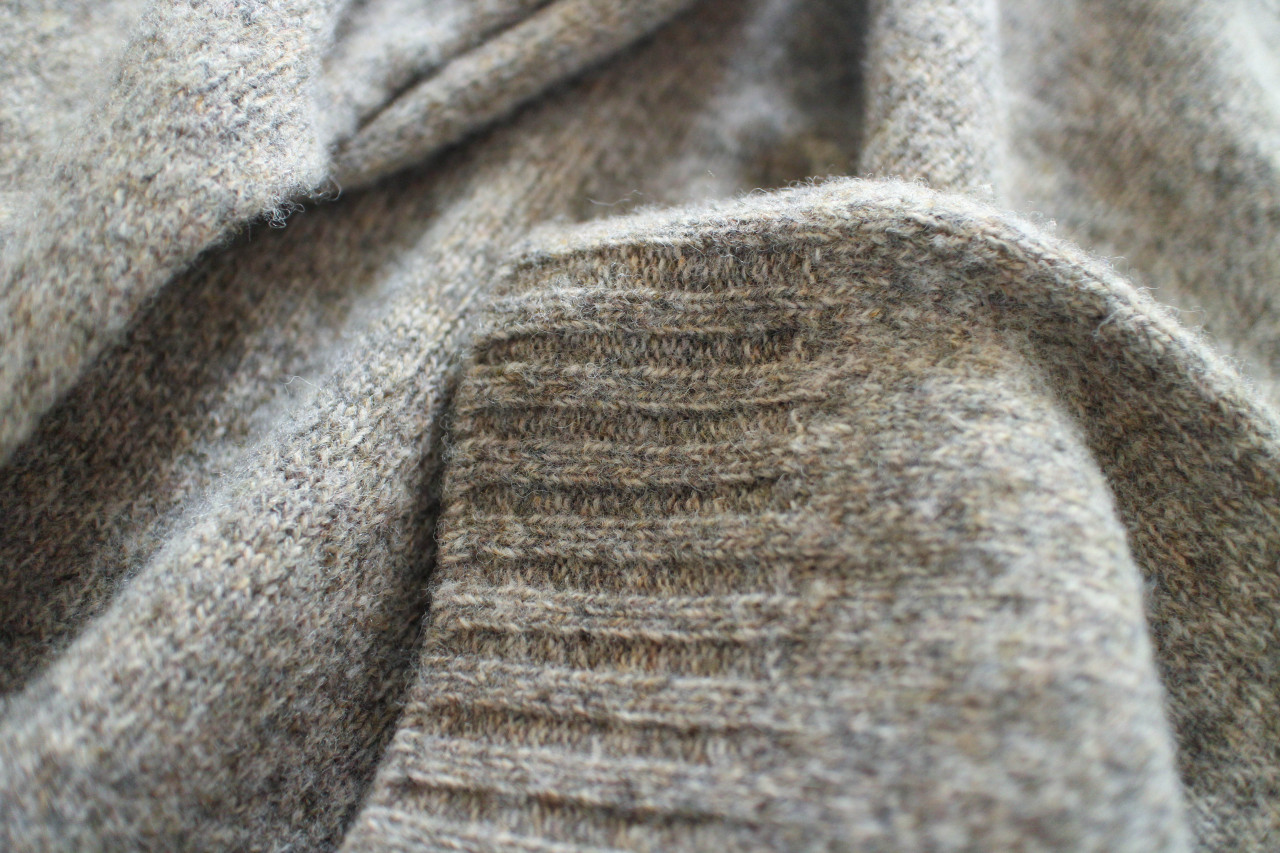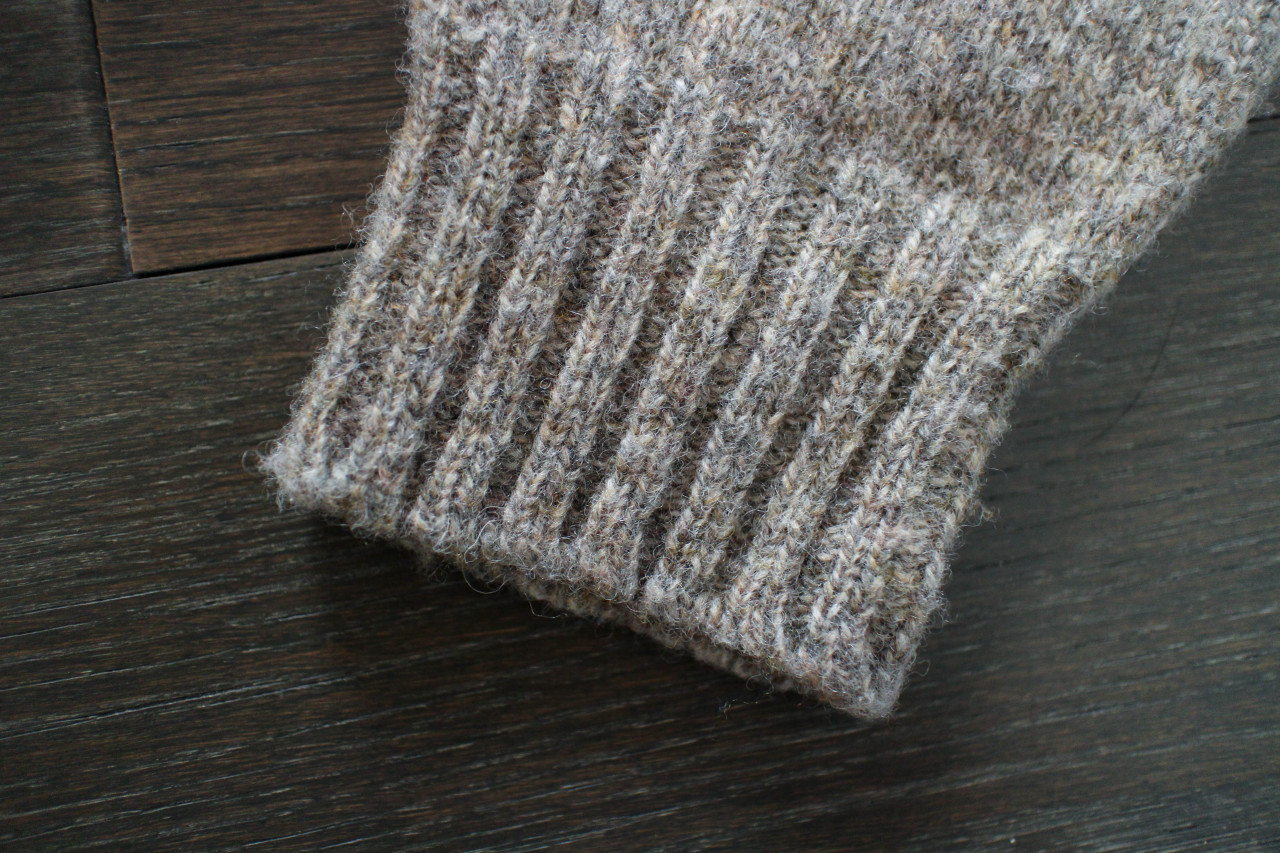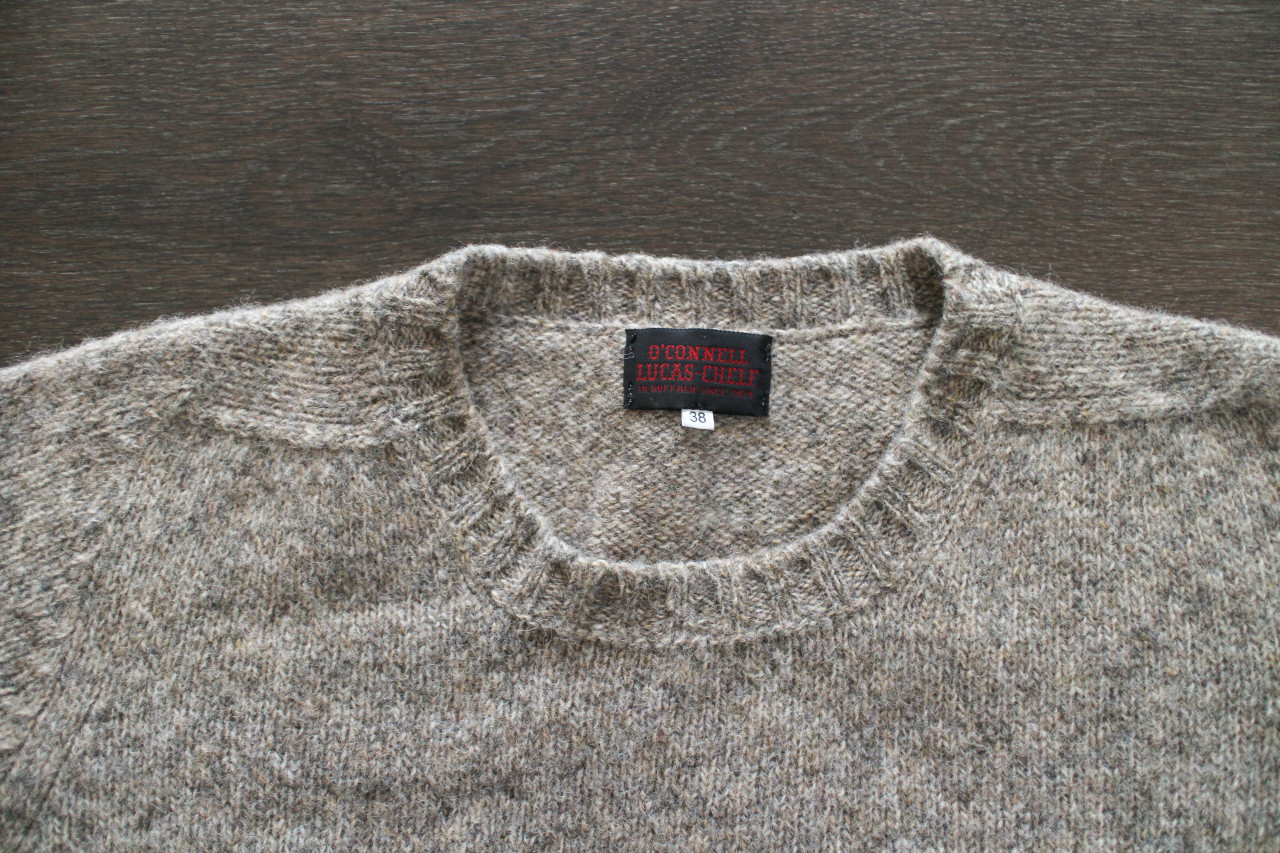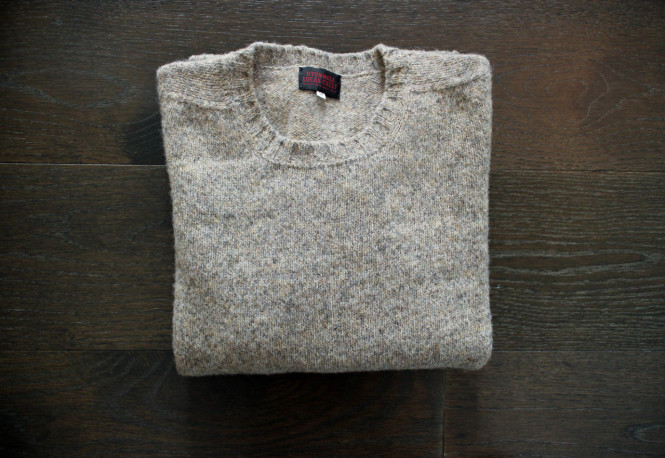This is my fourth year living in San Francisco, and the weather is finally starting to get to me. I don’t want to be the guy who complains about having 65-75 degree weather every day, but I think the lack of seasons has started to drive me insane. The temperature continues to hover around the low seventies, which means that I’m still wearing lightweight clothing and sweating while I walk around the city. It also means that I haven’t had any opportunities to wear this new shetland sweater from O’Connell’s; fortunately, I recently vacationed in Canada and was able to wear it for a week straight.
Shetland sweaters appeal to me for a few reasons. First, I think their casual style makes them easier to wear than dressier knits like v-neck merinos and cashmeres. Those styles look better layered under tailored clothing, in my opinion. Second, I feel that shetland offers much more visual depth than other options, at least at the low- to mid-range level. Personally, I quite dislike the very flat look of most inexpensive merino sweaters that we see in the wild today (I’m not trying to hate on merino, I just think it’s usually not the best option). For instance, just take a look at the beautiful richness of the knit in this photo – you won’t get that in a cashmere sweater from Uniqlo:

Lastly, and perhaps most importantly, I think that shetlands provide the best value in the knitwear family. Good sweaters are expensive, but shetlands are generally the least pricey (and hardest wearing) of the bunch. Although I can appreciate the benefits of a nice cashmere knit, I just can’t afford one; with shetland, I can get a top-tier sweater for less than the price of a mediocre cashmere sweater from J. Crew.
For these reasons, I decided to try a sweater from O’Connell’s. This company is known for their great trad staples, and their sweaters have been highly praised (one particular fan comes to mind…). The $165 price plus $7 shipping is not chump change, but this article is the real deal. It’s woven in Scotland out of beautiful yarns and features that dry, scratchy texture that you just can’t put a price on.
The color shown here is called “mushroom”. I chose it because I love the variegation in the color and wanted something that I could pair with denim. The appearance is even better than I had hoped; the color of the yarn, when paired with the rough texture, gives the sweater some wonderful visual complexity.

On top of that, the quality has exceeded the level I was expecting. The ribbing around the neck, bottom, and arm holes is tight and clean, and the saddle shoulder stitching is also well done. That said, the most impressive sign of quality is that the sweater has no seams. The construction is entirely tubular, kind of like a nice sock. Most knitwear on the market – even some of the expensive stuff – is made with several knit “panels” that are then sewn together. This will result in bulky seams, which are generally located on the sides and under the arms. Unlike woven fabrics, though, seams on knitwear aren’t strictly necessary and are generally used to cut costs.
One last sign of quality that I appreciate on this garment is that it comes in chest sizes (rather than alpha S/M/L sizes). This gives more variance in fit and allows for more accurate sizing. Although it isn’t a sign of quality unto itself, it shows that O’Connel’s is committed to making these sweaters as great as they can be.

As wonderful as all of these attributes are, though, getting the fit right is still incredibly important. As far as I know, O’Connell’s is not available in stores (unless you live in Buffalo, NY), which means most of us will be buying without trying on first. If you visit the product page for this sweater, you will notice that they recommend going up one from your sportcoat size. This surprised me at first; given the old school, trad style of the company, I would have assumed the opposite. But I wasn’t about to go against their wishes, so I ordered a 38 (my sportcoat size bounces between a 36 and 38, but my true chest size is around 36-37).

The result? The fit is good, albeit a bit on the roomy side. The chest fits reasonably well, but the sides have no taper and fall straight downward. When added to the sweater’s slightly longer than usual length, it makes for a somewhat billowy midsection (the sleeves are also slightly on the full side, but this is less noticeable). I wouldn’t say that it’s a bad fit; the garment’s casual and old-school vibe makes a comfortable and “cozy” fit seem appropriate (for instance, this fits me much like the people in these photos). That said, if you’d like a modern, “slim” look, this might be a bit more shetland than you’re hoping to get. It’s hard for me to give good sizing advice based on a sample size of one, but it seems possible that going true-to-size could be the right option for some. If you a) want a slim fit and b) don’t have particularly long arms, it’s possible that you could be best off with TTS. My arms are quite long for my chest size, and in my case I think sizing down would result in too-short sleeves. Keep in mind that I have only ever tried this one on, and there’s certainly some potential for variation in garments like this. If you’re in doubt I would size up one chest size, like O’Connell’s suggests.
So do I recommend this sweater? Yeah, I do. It’s about as much sweater as you can get for the price, and it really looks and feels like the genuine article. There’s still some mystery around how these will fit, but that just comes with the territory. And for better or worse, knits are very susceptible to shrinking and stretching, so it’s all kind of moot anyway. When I wash this at the end of the season I’ll probably do so with warm water and see if it tightens up just a smidge. Even if it doesn’t, I’ll still be perfectly content wearing it with the rest of my Autumnal clothing – if the weather ever cools down, that is.

